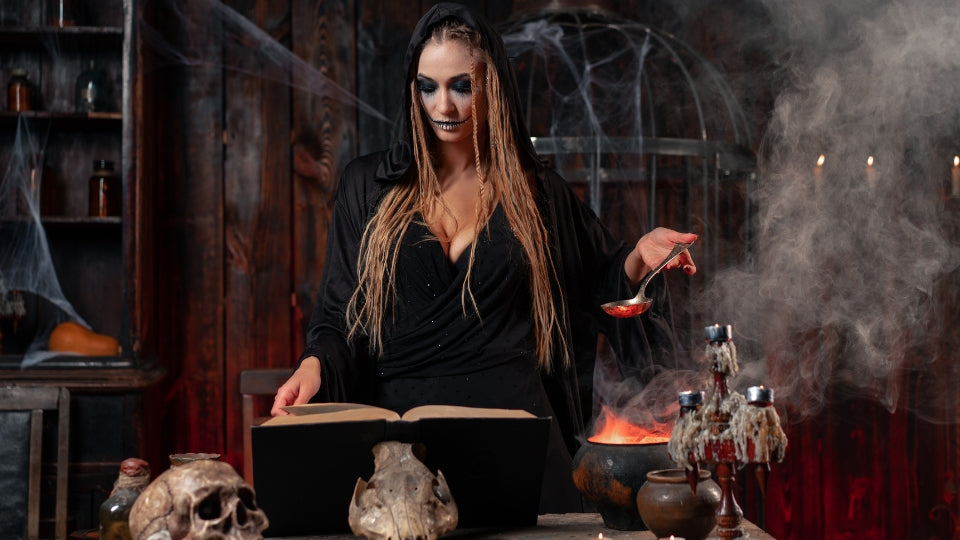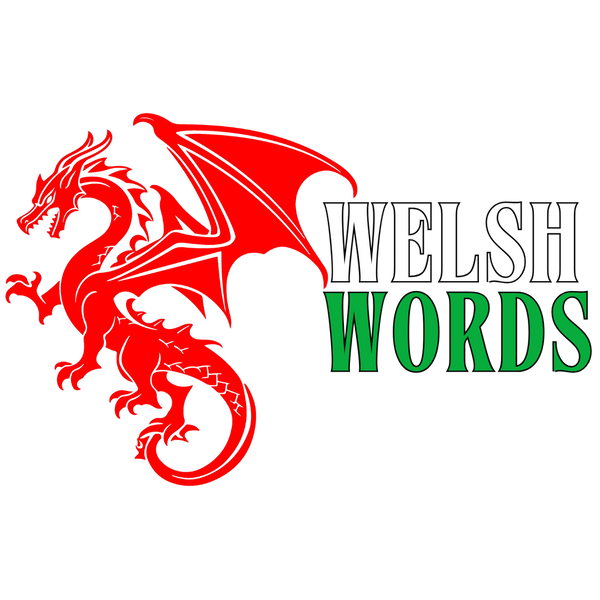
Witch - Gwrach
The word gwrach (pronounce "gwrach" as "goo-rach", with a guttural "ch" like in Scottish "loch") in Welsh means ‘witch’ or ‘hag’. In fact, the concept of the ‘witch’ or ‘hag’ is central to Welsh folklore, mythology and cultural history. Like the word ysbryd (spirit) gwrach has different, overlapping layers of meaning that have evolved over centuries of storytelling. It is still tied to ideas about the supernatural, but as a living part of the Welsh language it has also become about power and transformation.
Gwrachod is its plural, and the word can be used for both the witches of the legendary past and the hags of the modern-day stories and festivals. The gwrach are a product of Welsh folklore, a fitting amalgam of fear and reverence – equally dangerous and wise.
Mutations
Soft Mutation: Ei wrach (his witch)
Nasal Mutation: Fy ngwrach (my witch)
Aspirate Mutation: Remains unchanged as ‘g’ is not affected by this mutation
Origins and Meaning
The word gwrach may have ancient Celtic, even pre-Christian, roots, echoing the figure of a wise, often elderly woman may conduct cunning or healing magic and is venerated as a transmitter of wisdom and lore. In time, as the figure of the gwrach transformed, she would be redefined into something distinctly darker and more sinister, typically during medieval times when accusations of witchcraft threatened with death.
But the gwrach was probably subject to external influences, too, not least the later arrival of Christianity, and the medieval spread of witchcraft trials across Europe. In Wales, however, the gwrach was never simply a bogeyman. In some stories, she represented a guardian of pre-Christian knowledge; in others, she was a shape-shifting trickster who could alter the fortunes of a village or an individual for good or ill.

Noson y Gwrachod (Night of the Witches)
Witches are intimately connected with the eve of the Celtic festival of winter (Noson Calan Gaeaf), during which the gwrachod were said to wander the landscape, strong in the dark. Bonfires were lit, ghoulish faces carved into turnips to scare off evil – including witches.
One feared spectre of Noson Calan Gaeaf was the gwrach-y-rhibyn, a terrifying old hag who was said to prophesy death. This screeching, bat-like woman with long sharp nails was a common visitor of those appointed to die. The gwrach-y-rhibyn is a uniquely Welsh variation of the bean sídhe (banshee). Despite her fearsome reputation, she was seen as a communicator between the two worlds of the living and the dead.

Famous Welsh Witches
Many folk legends from Wales feature gwrachod of one kind or another, and there are some particularly notable individuals who have gone down in history as well as legend. Gwrach-y-Rhibyn is, of course, one of the most famous, but there are others whose stories are still told.
The Witch of Llyn y Fan Fach - A young Carmarthenshire farmer fell in love with a woman he saw every day in the waters of Llyn y Fan Fach. She wasn’t initially described as a gwrach, but her supernatural powers (including her control of healing) link her to such figures, as do her children (when the farmer betrayed her, she slipped back into the lake, leaving her children behind; they became the Physicians of Myddfai, known for their knowledge of herbal remedies and healing arts).

Llyn Y Fan Fach - Bannau Brycheiniog / Brecon Beacons
The Witches of Snowdonia - In North Wales, the region of Snowdonia has been historically associated with witchcraft, and folklore relates that the meetings of gwrachod took place on the high peaks, at which they performed their rituals during storms, controlling the weather and the fortunes of travellers using their magic powers. They were believed to be able both to curse and to bless, depending on their mood.

Gwrachod in Welsh Mythology
Welsh mythology is filled with witches and sorceresses, usually powerful, dangerous women whose influence could determine the fate of those they encountered. In the Mabinogion, one of Wales’s best-known collections of medieval stories, there are a number of examples, such as Ceridwen. In the Second Branch of the Mabinogon, Ceridwen is a shape-shifting sorceress who knows the secrets of transformation, potions and rebirth, and is a dualistic figure: she nurtures and destroys. The witch as creator and destroyer.
Modern Reflections of Gwrach
While witch-hunting in Wales has long since died out, the gwrach still has an important cultural place. She is a popular part of the Halloween celebrations now known as Nos Calan Gaeaf and can still be told as a story at events throughout Wales. Halloween has become a time of ghost tours and haunted walks, sometimes involving storytelling, with stories of witches and magic popular parts of the evening’s entertainment.
The gwrach has also made its way into Welsh popular culture, with films, books and TV continuing to play on the themes of witchcraft and magic. Y Gwyll/Hinterland, a Welsh-language crime drama, invokes a dark, brooding landscape that assumes the sinister, gwyllgi-like presence of the gwrachod with its dark secrets and occult powers.
Gwrachod were adopted into Welsh children’s literature and television, via Rala Rwdins, a series of books (and later, a TV show) by the writer Angharad Tomos. Tomos created a popular Welsh-language children’s TV show of the same name in the 1980s and ’90s. The stories focus on an eccentric witch (Rala Rwdins) and her friends as they go on imaginative adventures filled with magic. The show is remembered by many who watched it growing up in Wales.


Gwrachod in Welsh Music and Literature
If ysbrydion (ghosts) have been honoured in Welsh music, then gwrachod have not been far behind. And it is the figure of the witch that has inspired songs such as “Can y Gwrachod” by the Welsh folk group Ar Log, which reflects on the “current fascination for witches”, weaving ancient tunes together with modern sensibilities. Writers and poets too have drawn inspiration from the gwrach, finding in the figure of the witch new ways of writing about transformation, rebellion and power.
Test Your Knowledge: Gwrach Quiz 🧙♀️
Thanks for reading! How well did you pay attention? Answer these questions about the Welsh gwrach (witch) and its significance in folklore in the comments below. Share your thoughts or any experiences with witch-related legends!
1. What does "Gwrach" mean in English?- A) Ghost
- B) Witch
- C) Warrior
- D) Healer
- A) Nos Calan Mai
- B) Noson Calan Gaeaf
- C) Nos Calan Awst
- D) Nos Nadolig
- A) The Witch of Llyn y Fan Fach
- B) Ceridwen
- C) The Hag of the Mist
- D) Gwrach-y-Rhibyn
- A) Control of the weather
- B) Healing powers
- C) Foretelling the future
- D) Transforming into animals
- A) Hinterland
- B) Rala Rwdins
- C) Y Gwyll
- D) Pobol y Cwm
Enjoy testing your knowledge of Welsh witches and their mysterious lore!

